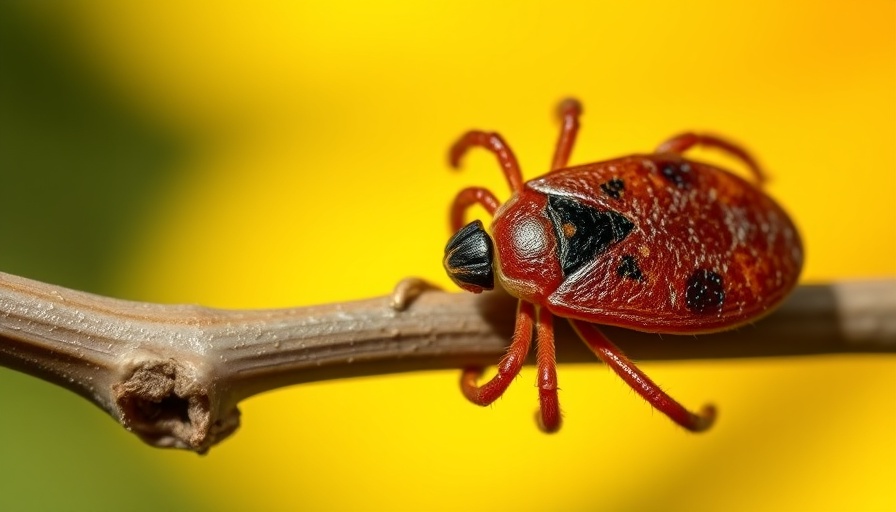
The Hidden Risks of Tick Bites: What You Truly Need to Know
Ticks might be small, but the impact they carry is immense. While many people associate ticks with a quick trip to the doctor or an itchy bite, the deeper implications of their existence touch upon health, environment, and our own choices as humans. With the black-legged tick, also known as the deer tick, being a leading transmitter of diseases like Lyme disease, understanding their history and our relationship with them is crucial.
How Human Actions Have Shaped Tick Populations
Ticks thrive in ecosystems that support their hosts—such as deer or rodents. A historical glance shows that during the 18th and 19th centuries, the clearing of forests across the northeastern U.S. led to unusual ecological shifts. As settlers pushed into nature, they disrupted the natural balance, removing apex predators and allowing deer populations to swell unchecked. This imbalance allowed deer ticks to proliferate, turning regions that had once been healthy into breeding grounds for Lyme disease.
Environmental Factors Influencing Tick-Borne Diseases
The rise in cases of Lyme disease, which affected over 89,000 Americans in 2023, tells a poignant story of how our environment directly affects our health. The concurrent rise of tick populations due to ecological changes means that more people are now living in areas where ticks can thrive. For instance, as urban developments expand into wildland areas, Californians find themselves in closer proximity to tick habitats, increasing their risk of tick bites. Understanding this can help individuals make informed choices about where to hike or explore outdoors.
The Connection Between Ticks and Disease Prevention
As health-conscious individuals, it’s essential to recognize that minimizing ticks, and the diseases they carry, begins with a proactive approach. Here are some expert health insights to keep you safe:
- Use Tick Repellents: Natural tick repellents can deter these pests when you head out into nature.
- Wear Protective Clothing: Opt for long-sleeved shirts and pants while in areas known for high tick activity.
- Check for Ticks After Outdoor Activities: Regularly check yourself and your pets for ticks after spending time outdoors.
- Maintain Your Yard: Keep your grass trimmed and eliminate debris where ticks might thrive.
Training Your Body: The Role of Longevity Practices
In tandem with avoiding tick bites, many lifestyle choices can help optimize health and longevity, especially in the context of disease prevention. Following a healthy diet protocol rich in antioxidants can boost your immune system, making it easier for your body to fight off infections. Adding supplements that support cellular health can also be beneficial, particularly those targeting aging research and telomere science.
Conclusion: The Road Ahead
Ticks represent an intersection of our choices, environmental factors, and health risks. Recognizing this relationship is vital for informed decision-making about our health and the environment around us. As individuals become lebih aware of your surroundings and take steps to protect themselves from ticks, health optimization becomes a personal responsibility. Implementing wellness strategies now, such as regular health check-ups or staying informed about the latest in cutting-edge health research, can promote a longer, healthier life.
As we continue to explore the complex relationship between our environment and health, I encourage you to take action in your daily life. Assess your risk factors, adopt preventive measures against tick bites, and embrace strategies that optimize your healthspan. Together, we can extend not just our lifespan, but our healthspan—living longer while living better.
 Add Row
Add Row  Add
Add 




Write A Comment